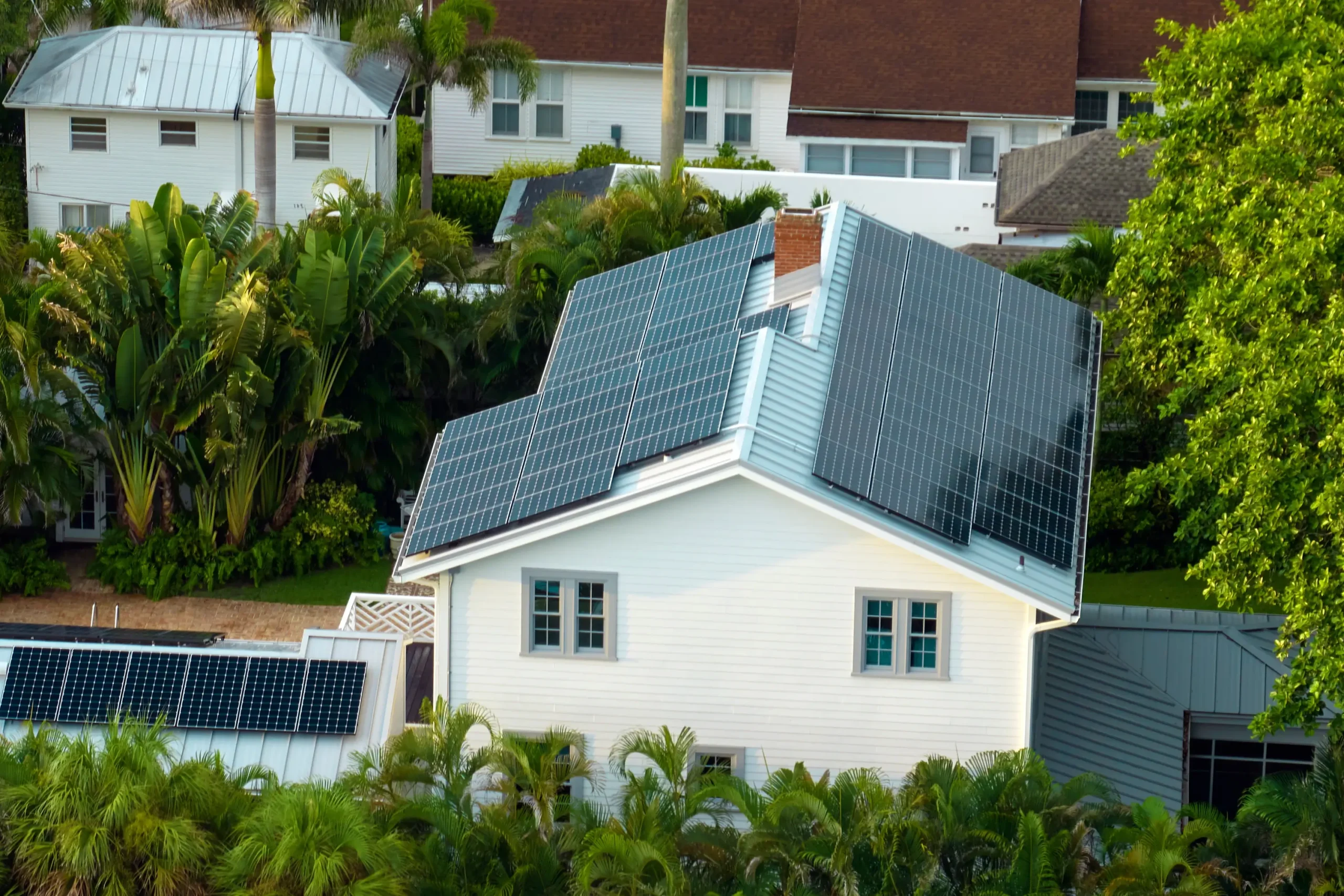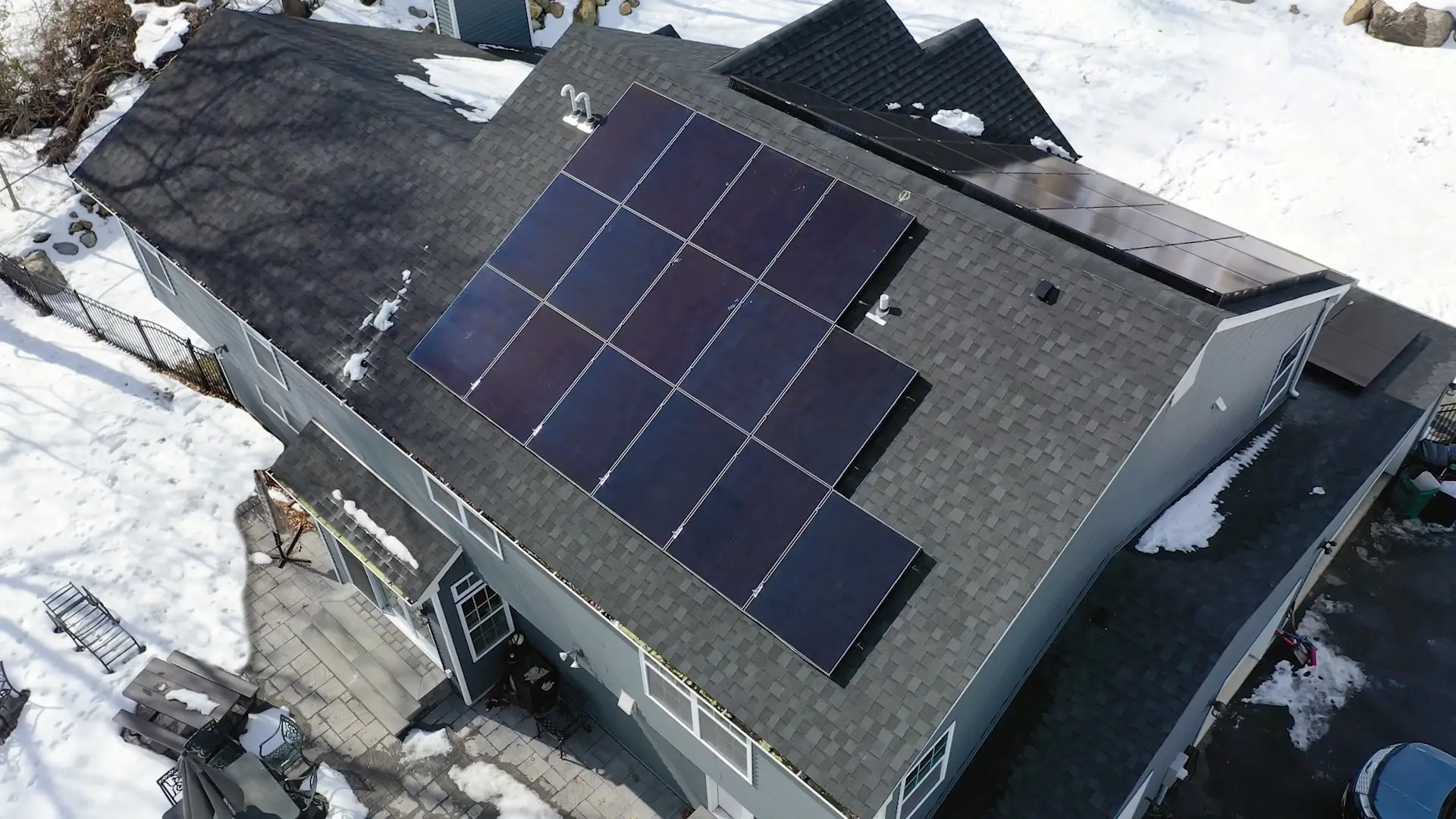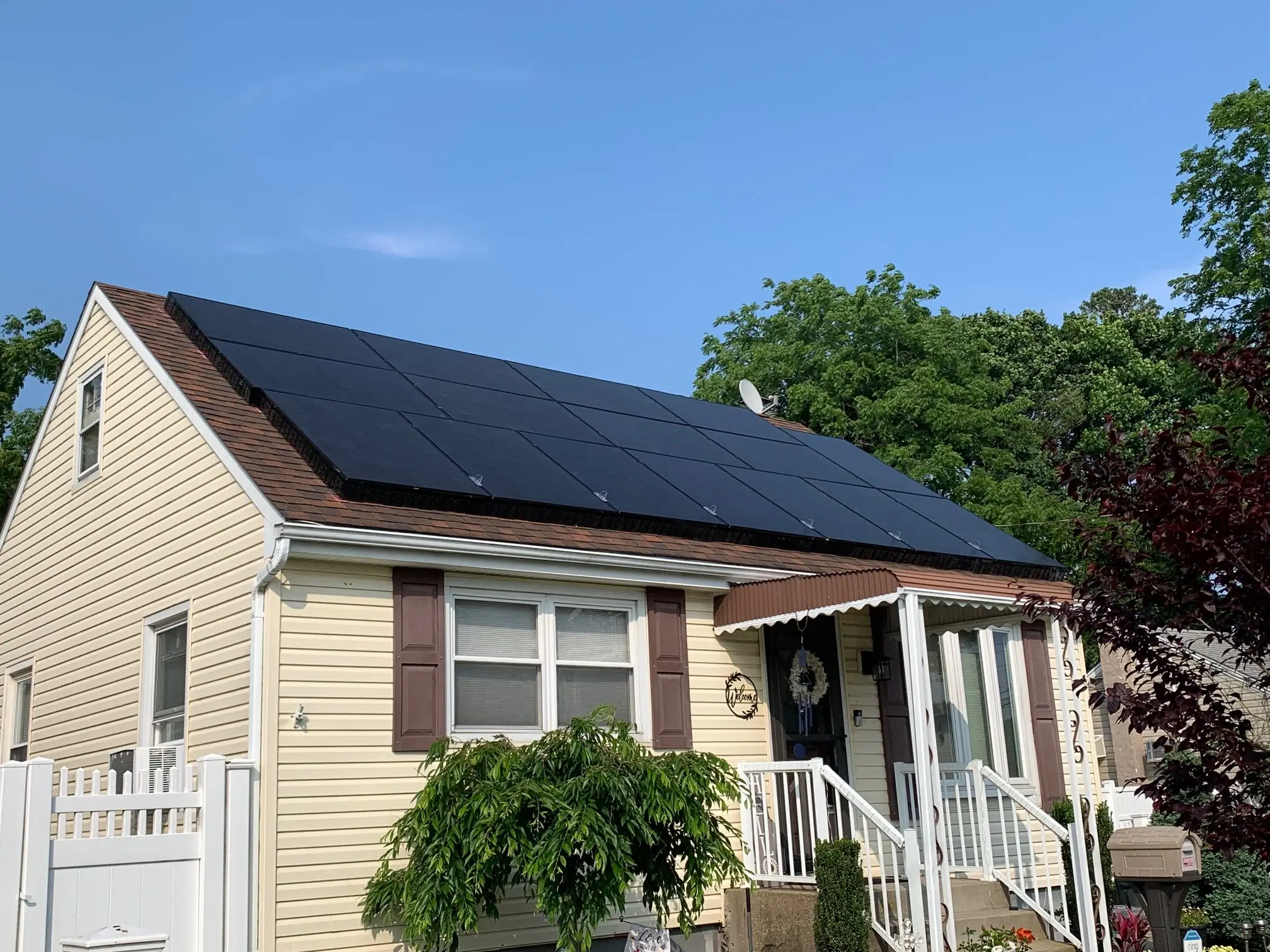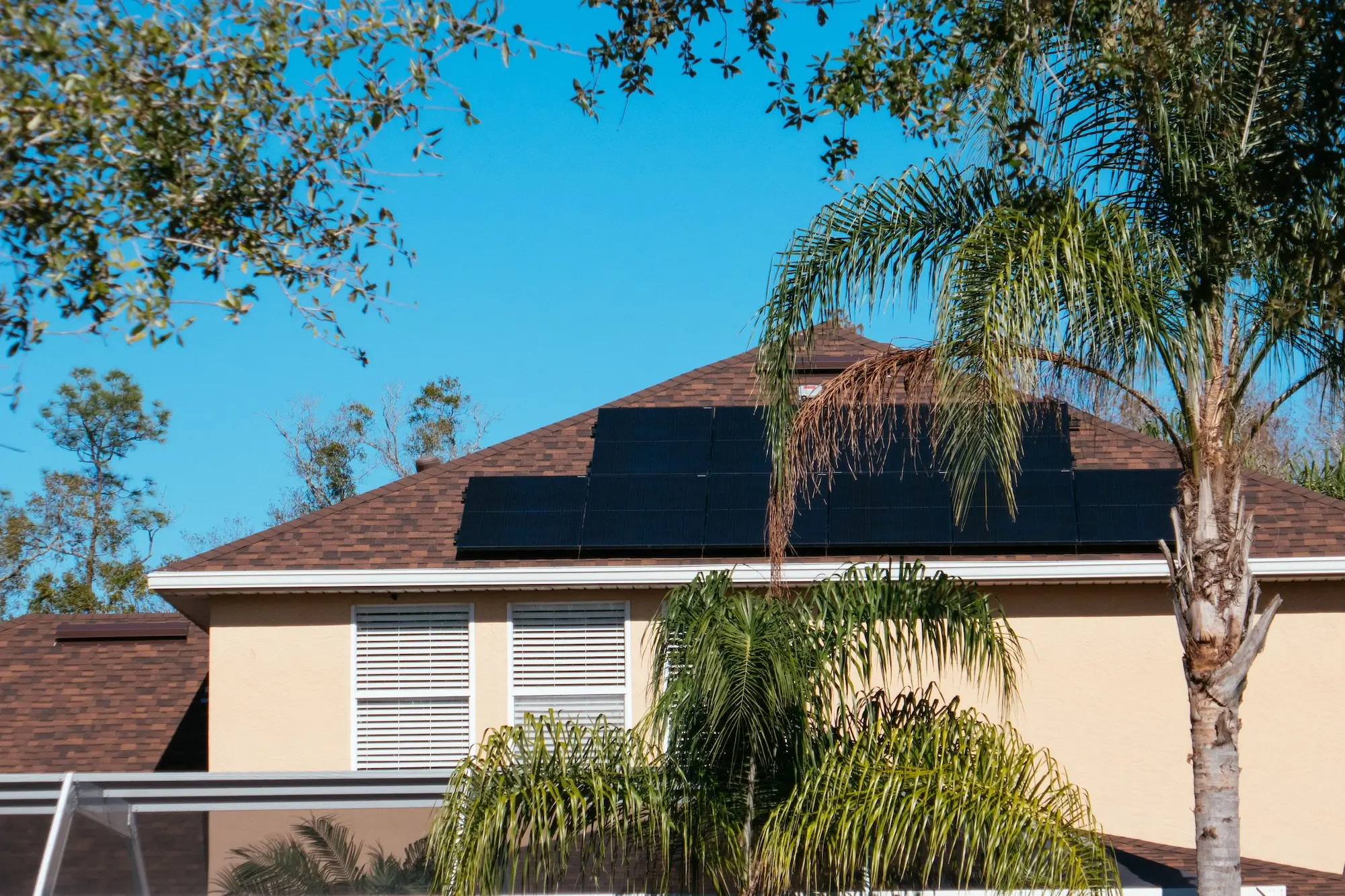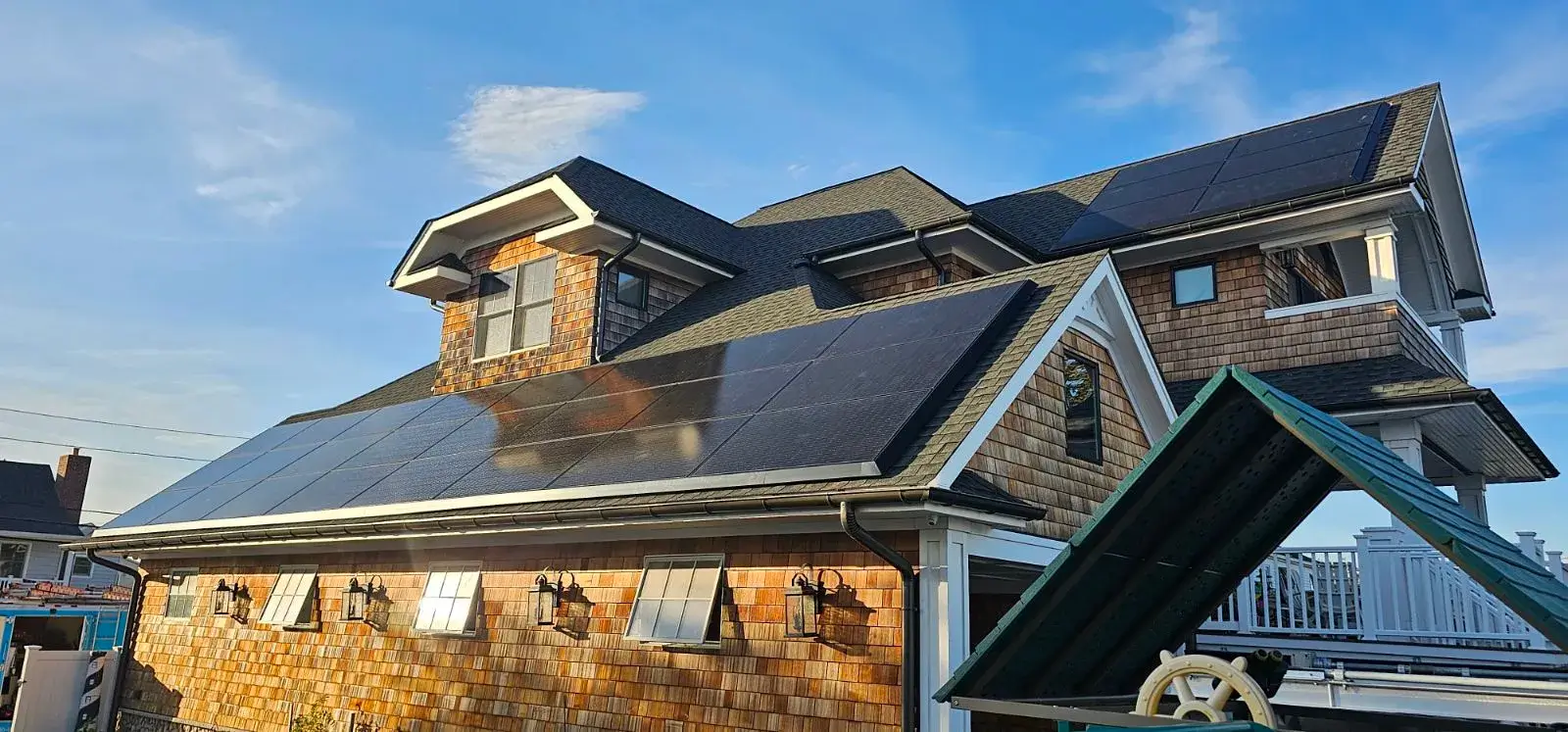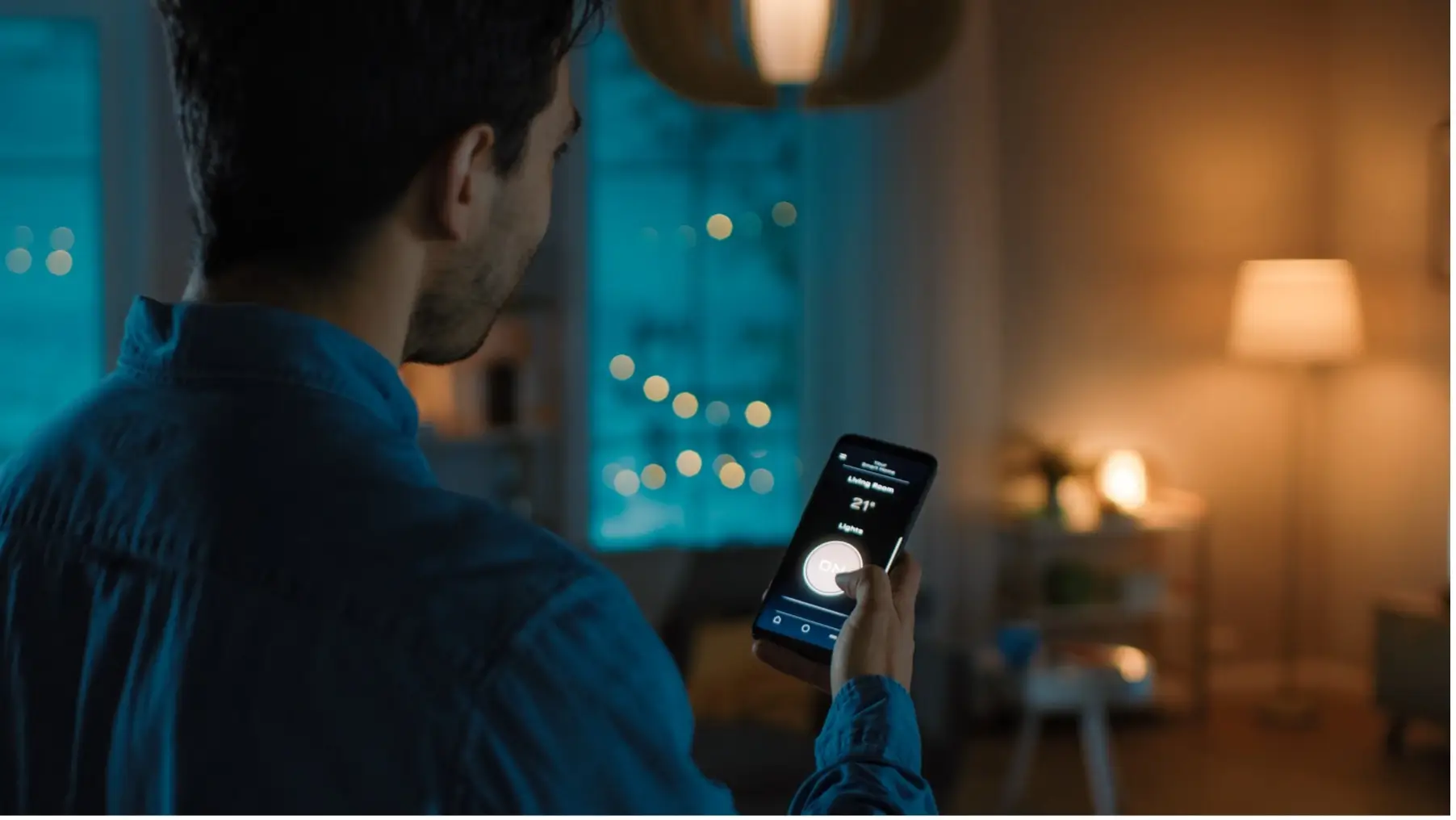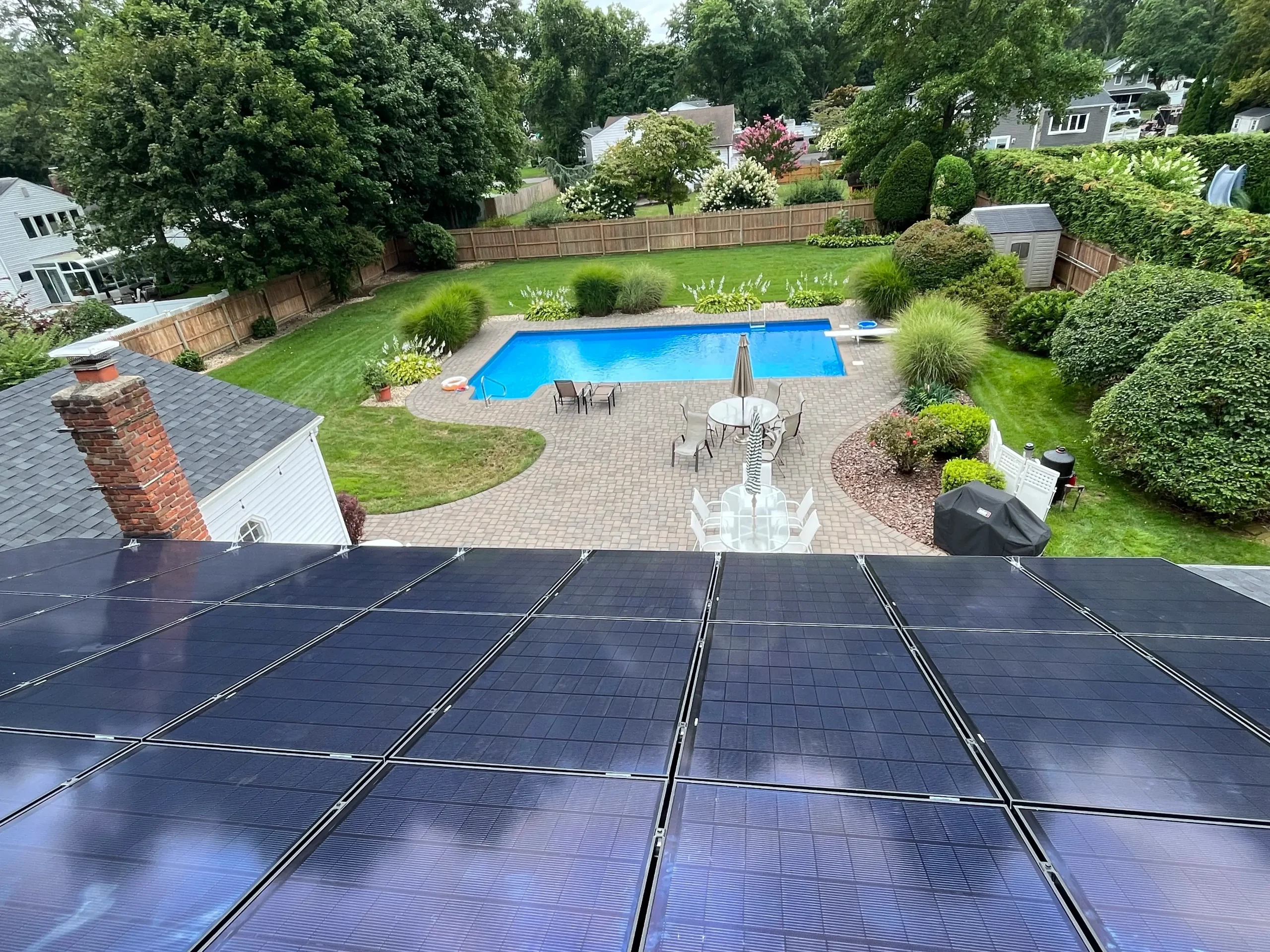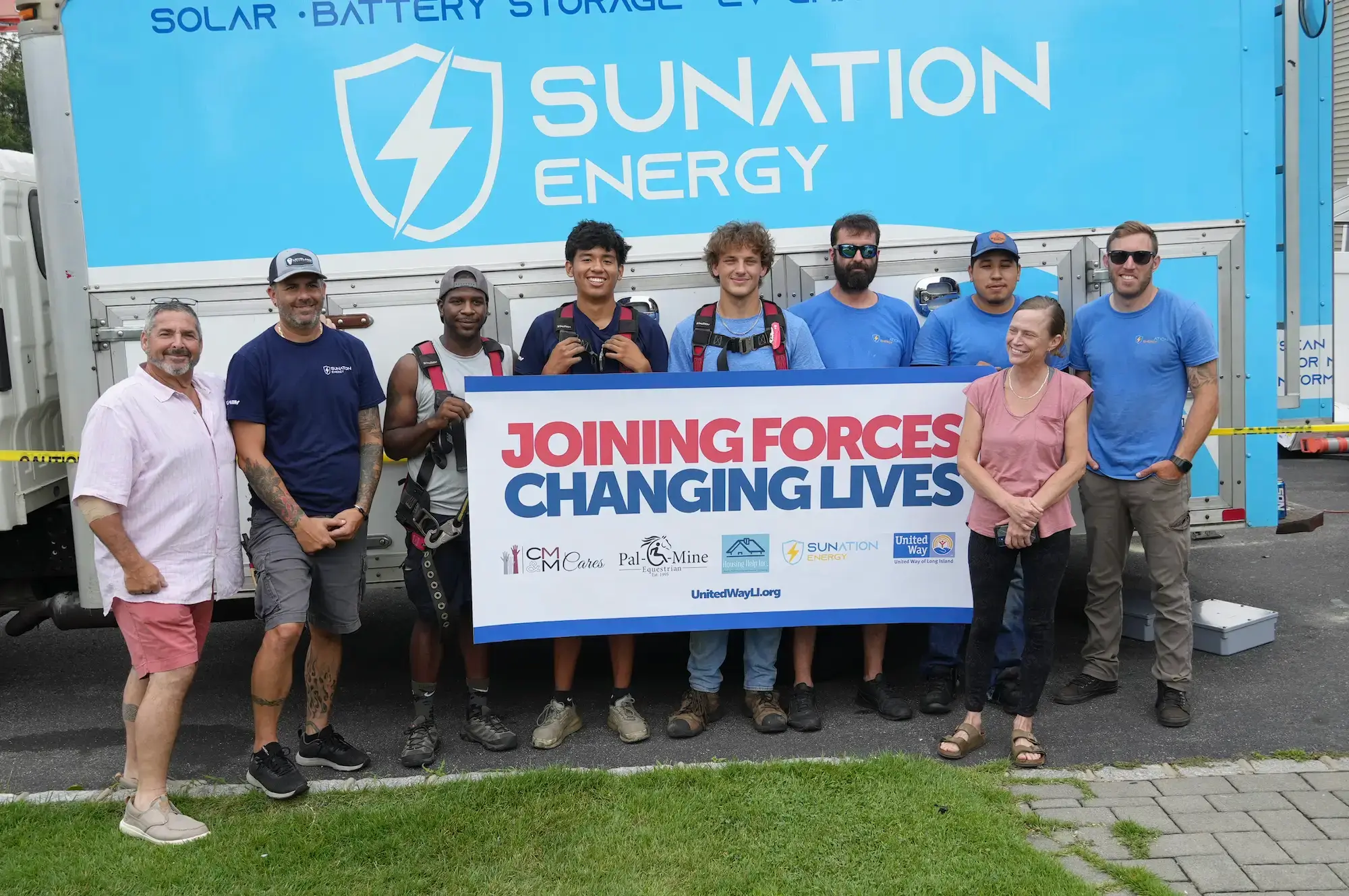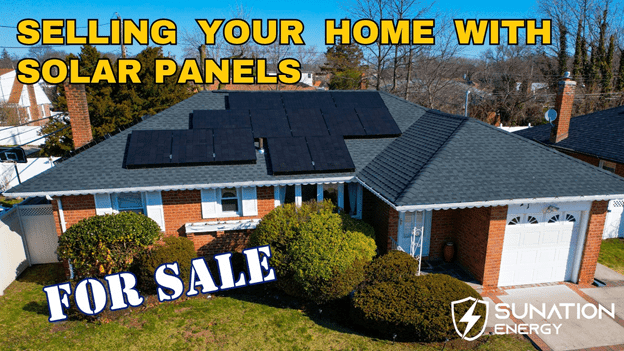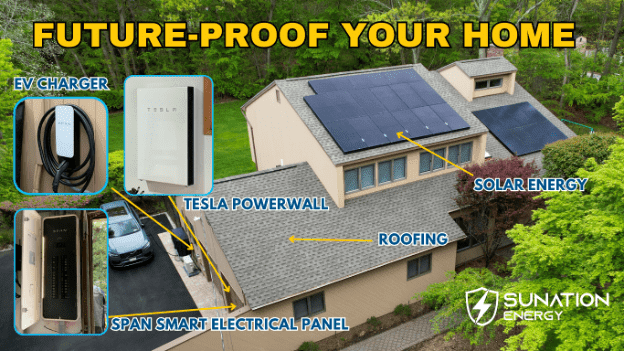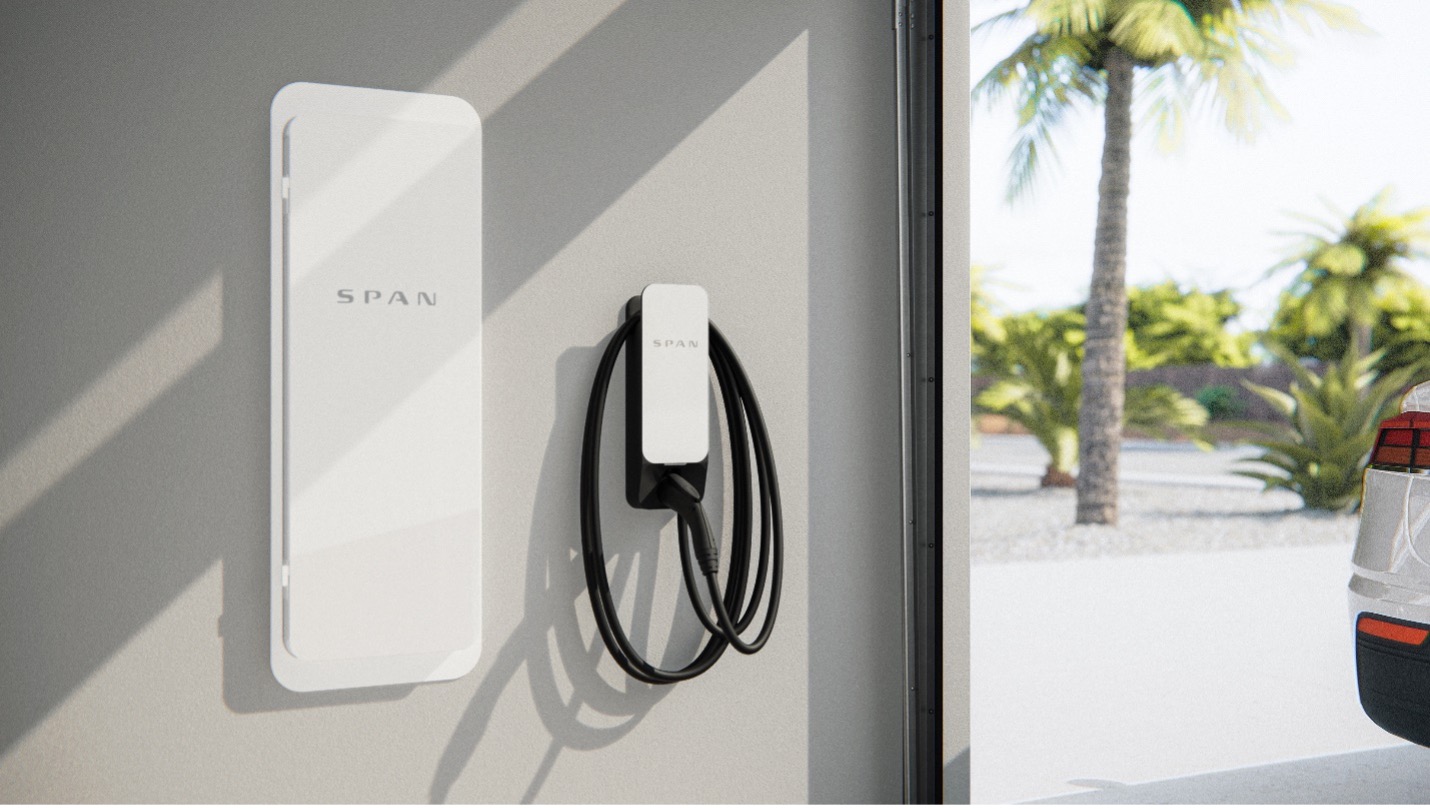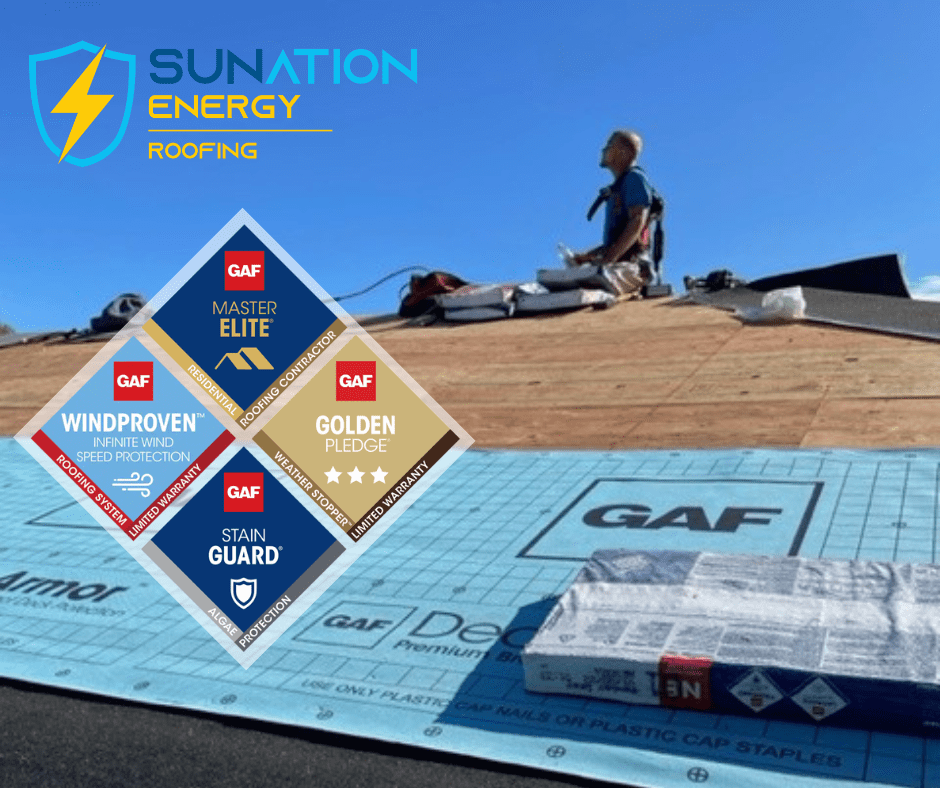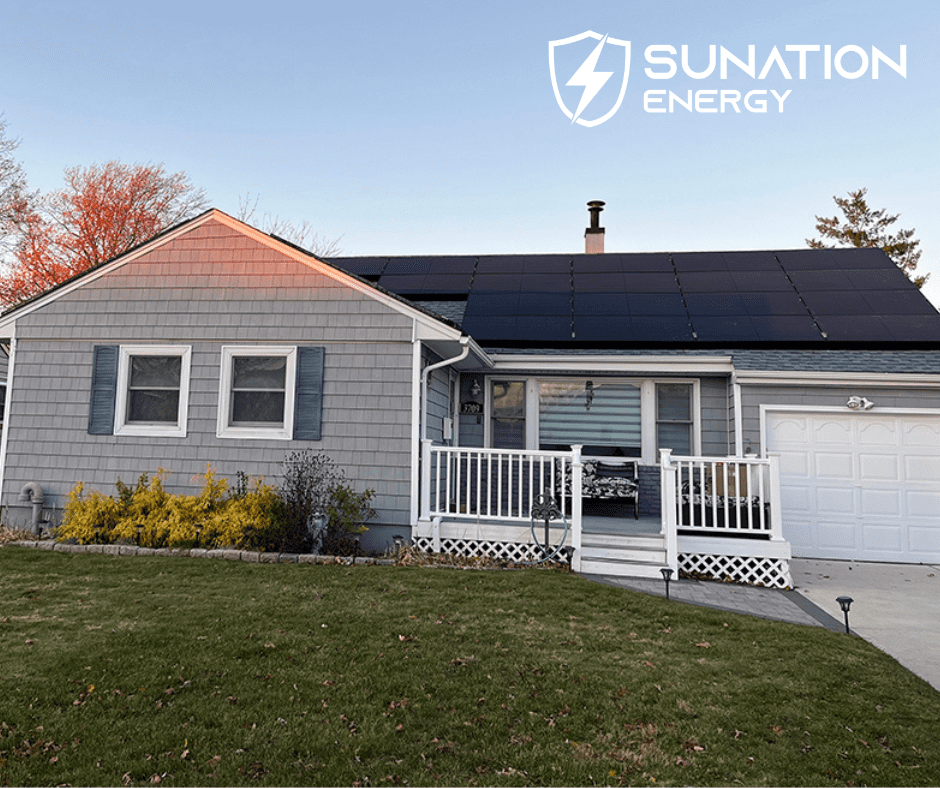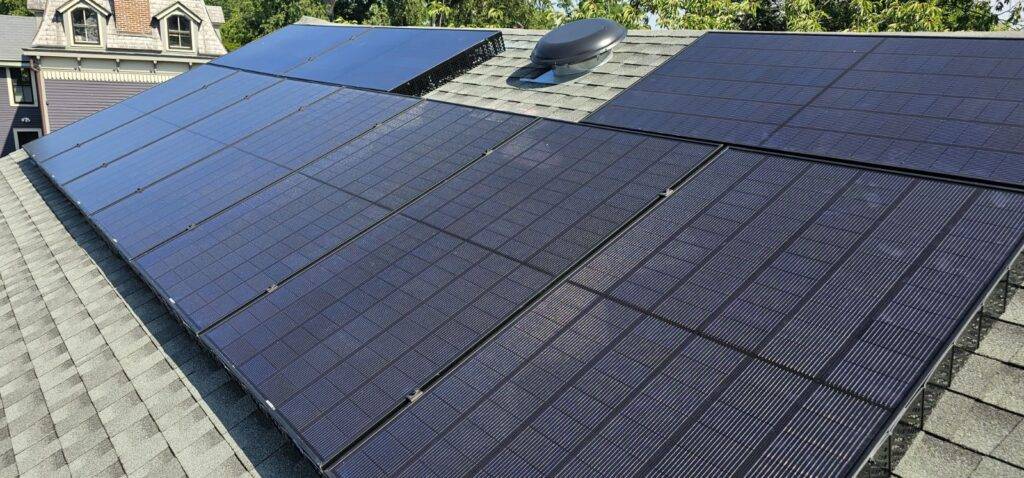
As homeowners are looking to take more control over their energy and future-proof their homes, solar energy has become the solution to meet both the increasing energy needs in our communities and combat the environmental challenges we’re facing. While the process of how solar energy works has been around for years, advances in technology along with available tax credits and incentives have made going solar more accessible to homeowners than ever before, especially here on Long Island. Understanding how solar energy works is just the first step on your journey to taking control of your own energy with the renewable power of the sun.
What Is Solar Energy?
Solar energy, at its core, is a form of energy that is made through the conversion of sunlight into electricity that is used to power your home, appliances, phones, computers, and more. This type of energy is made without the use of fossil fuels and does not generate pollution, making it a clean source of electricity. By reducing a home’s reliance on the power utility’s grid, it’s also a money-saving source of energy as homes that run on solar energy experience reduced electricity bills year-round.
What Makes Up A Solar Energy Array?
Before we dive into how solar energy works, it’s important to understand what the main components of a solar energy system, or solar array, are and what their roles are:
Solar Panels or Photovoltaic (PV) Panels: Solar panels containing photovoltaic cells are what take the sunlight and turn it into an electric current.
Solar Inverters: Inverters take the electricity generated from the solar panels and converts it into a usable form of electricity that our appliances and devices need to run.
Mounting, Racking, and Wiring: These components are what provide the necessary support for the solar panels and can aid in positioning the panels at the most optimal angles for the best sunlight exposure. The wiring keeps the entire system connected.
Solar Batteries: More homes are including battery energy storage in their solar arrays to store excess energy which can be used whenever the power grid goes down. This option can replace noisy gas-powered generators with a clean, quiet, and automatic backup power solution in the event of a power outage.
How Solar Energy Works
- Sunlight Hits The Solar Panels: As the light from the sun reaches the solar panels, containing photovoltaic (PV) cells, the light gets absorbed by the PV cells and the energy creates electrons. These electrons create an electrical current, specifically a DC current or Direct Current. However, our everyday appliances cannot run on DC current.
- DC Current Is Converted To AC Current: In order for our lights and electronics to run on solar energy, it must first be converted into a usable form. A solar inverter takes the DC current and converts it to an AC current, or alternating current. Without this step, the solar energy generated cannot be used by our everyday devices.
There are two ways inverters can convert energy. The first is a string inverter, which can also be called a central inverter. Each solar panel would get its own wire, or “string,” that would go to a central inverter, often located on the side of a home or in a garage. Another option is through microinverters. In this case, each solar panel would get its own smaller inverter right underneath the panel and the energy would be converted from the rooftop.
- Electricity Gets Distributed To Your Home: Now that the solar energy is converted to a usable AC current, the electricity can be sent to your home’s lights, appliances, and any other devices that need power. By running on solar, the home is relying less on the local power utility grid and is what saves homeowners money over time.
- Net Metering or Banking Energy Credits: When your solar array generates more energy than your home needs, the excess electricity gets sent back into the electrical grid. In a process known as Net Metering, the homeowner will be credited for the energy given to the grid. This frequently happens in the Spring when solar energy production is high and energy use is low. That homeowner can then use those credits at another time when the home is producing more energy that the solar array is creating, like in the Winter when the daylight hours are shorter.
- Battery Storage: Since solar energy systems are still tied to the power grid, when the grid loses power, so does your home. That can be prevented, however, with backup energy storage with the help of batteries like the Tesla Powerwall. A cleaner, greener, and safer option than the gas-powered generators, energy batteries can store excess solar energy and turn on automatically when the power grid goes down. The batteries are also rechargeable as your solar energy continues to generate electricity. This can prove especially useful if you live in an area that experiences frequent power outages or want to keep essential appliances running in emergency situations.
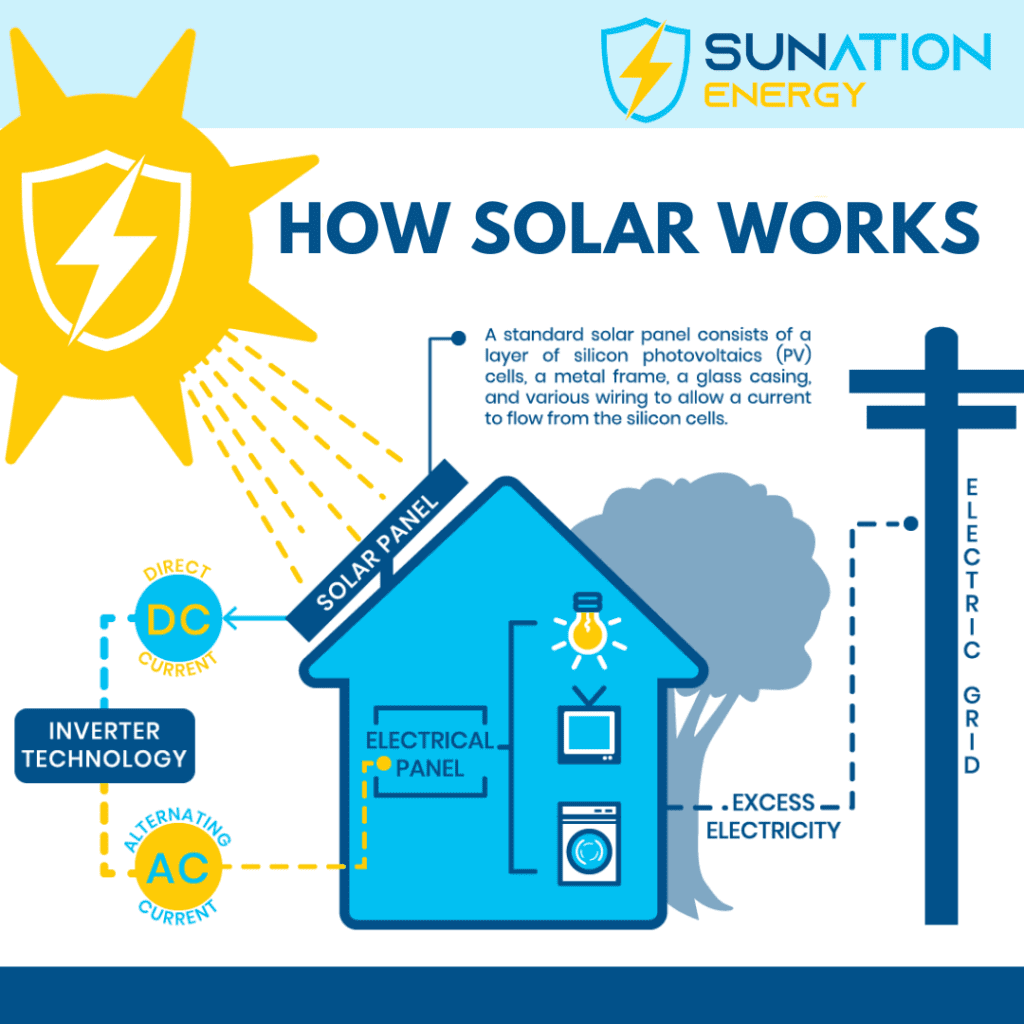
3 Types of Solar Arrays
Solar arrays can come in different shapes and sizes, and can also be placed in different locations. As each solar installation should be designed according to your specific energy needs and work with your home’s design, it’s important to know the different options that are available.
Rooftop Solar: Seen on residential and commercial properties alike, this array consists of solar panels placed on a home or business’s rooftop. In the case of a flat roof, panels will be placed at an angle to still maximize their exposure to the sun. Here on Long Island, the optimal angle is 30 degrees.
Ground-mounted Solar: Some homeowners and businesses opt to have their solar panels installed on the ground instead of their roof. Still maintaining that optimal angle, the solar array works much the same as a rooftop system would. This is more frequently seen with commercial solar installations or solar farms where there is more room to install solar panels on the ground.
Car Port Solar: Typically seen in parking lots, these commercial solar installations have two purposes. The first is to create clean, renewable energy. The second is to provide shade to parked vehicles. This can be a great option for businesses looking to reduce their energy costs.
Benefits of Solar Energy
Once your solar energy system is in place, get ready to enjoy the benefits of running on solar.
- A Renewable and Sustainable Source of Energy: As solar energy is powered by the sun, it’s a source of energy that won’t deplete over time and can be a constant, reliable power source. Even on cloudy or rainy days, solar energy is still being created.
- Reduce Greenhouse Gases: As solar energy is created, it is not producing any harmful pollution to the air, water, or land, unlike utility power plants that create air and water pollution. By relying more on solar and less on the utility’s power, fewer greenhouse gasses are produced which helps reduce our carbon footprint and fight climate change.
- Lower Electricity Bills: Another benefit of decreasing your reliance on the power grid is the reduction of your monthly electricity bills. The less power you need to use from the utility, the lower your monthly bills will be.
Solar energy presents an attainable, future-proofed solution to our growing energy needs, increasing energy rates, and environmental challenges. By taking advantage of how solar energy works to power your home, put more money in your pocket, and protect our planet for future generations, we’re all moving towards a cleaner, greener tomorrow.
Learn how to go solar on Long Island by talking to our SUNation team and putting the power of the sun to work for you at 631-750-9454 or schedule a free consultation online.

